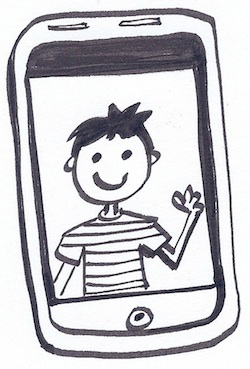Information & Design
Designing for humans
Designing for humans

Download ‘printer-friendly’ PDF version (File size: 183 KB)
“Children” constitute a widely diverse range of behaviours and ability.
In early primary years, children will be pre-literate or have very limited reading skills. Typing their names is a major achievement.
In later primary school, skills develop rapidly, but there is wide variance between children of the same age.
Children are highly social, dependent on peers for feedback, and highly conscious of their relationship with the adult world.
Online behaviour shows an extreme disinclination to read extraneous information, and an expectation of immediate response from user interfaces.
Trends mean that rapid changes in online preferences are likely.
For many children, computers and mobile devices are synonymous with games. A more “serious” focus emerges in later high school years.
Contrary to popular belief, children are not imbued with an innate understanding of digital technologies.
Provide age-appropriate materials.
Be cautious of designing for exceptional children. Inclusive design practices will enable the broadest possible range of children to participate in your technology.
Leverage knowledge children may have gained on social networking sites and games.
Maintain frequent contact with your target user groups, so that you can understand trends and changing behaviours.
Use text redundantly with images so that pre-literate users can access your product.
Use simple text.
Use fonts that approximate how children learn to write. For example, many fonts use “a” and “q” in variants that do not match how some children are taught to write those letters.
Do not use dialog boxes.
Don’t require explicit “save” operations. Save work automatically.
Exclude extraneous content.
Provide highly interactive and engaging applications.
Avoid visually noisy interfaces – they are distracting.
Provide large target areas.
Allow children to personalise.
If applications will be used on a smartboard, do not use a footer that can be accidentally activated by children leaning against the surface.
Avoid errors.
Support cooperative use, with two or more children using your product at the same time.
Design to support teachers and parents or guardians, who are likely to be assisting or supervising usage.
Use simple text.
Provide content that appears more “grown up” than that for early primary years.
Provide time-saving shortcuts.
Leverage knowledge children may have from social media and popular games.
Avoid appearing to patronise.
Apply sensible defaults.
Provide more sophisticated personalisation capability.
Support social networking.
Don’t attempt to appropriate or emulate children’s behaviour or speech (this is likely to backfire).
Provide increasingly “grown-up” content towards later years.
User Experience Magazine, Volume 10, Issue 1, has several useful articles about designing for, and testing with children. (UPA membership is required for full access).
The Nielsen Norman Group reports “Usability of Websites for Children” and “Teenagers on the Web” are useful. (Payment required for full access).
This document accompanies our presentation “Children of the Revolution” at UX Australia 2011.
Gerry Gaffney @gerrygaffney
James Hunter @jamesshunter
Drawing: Gina Ellis @ginadotellis
August 2011